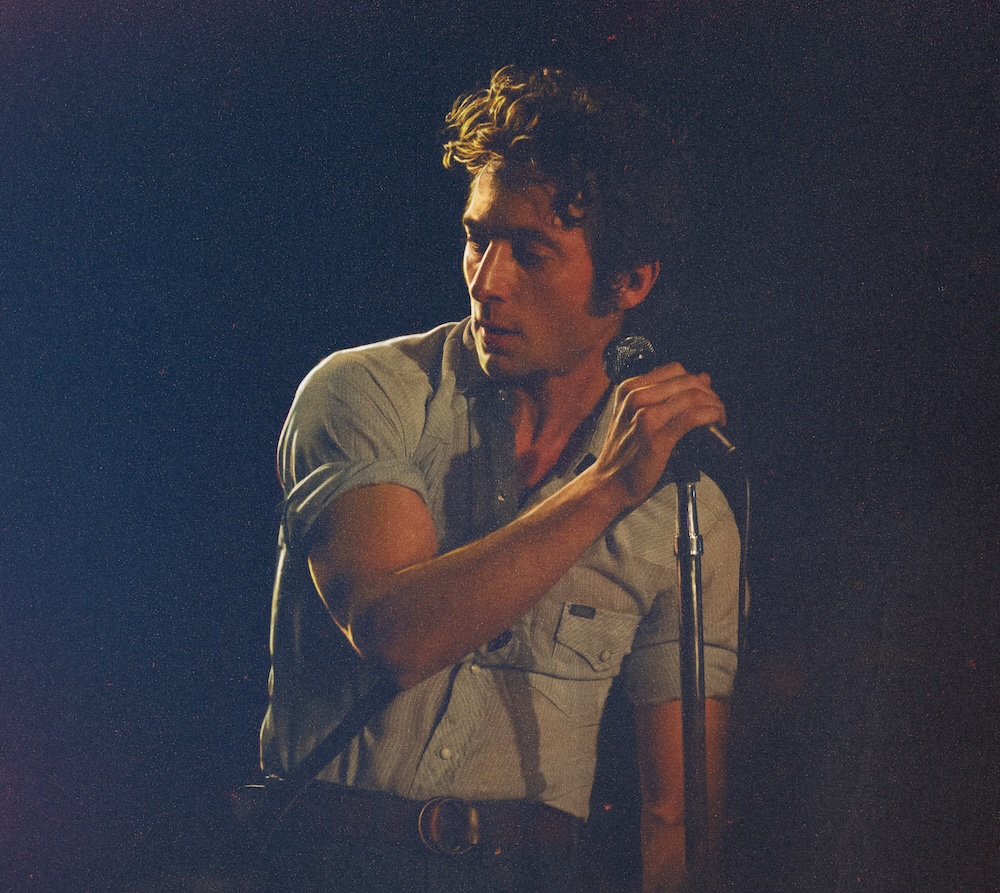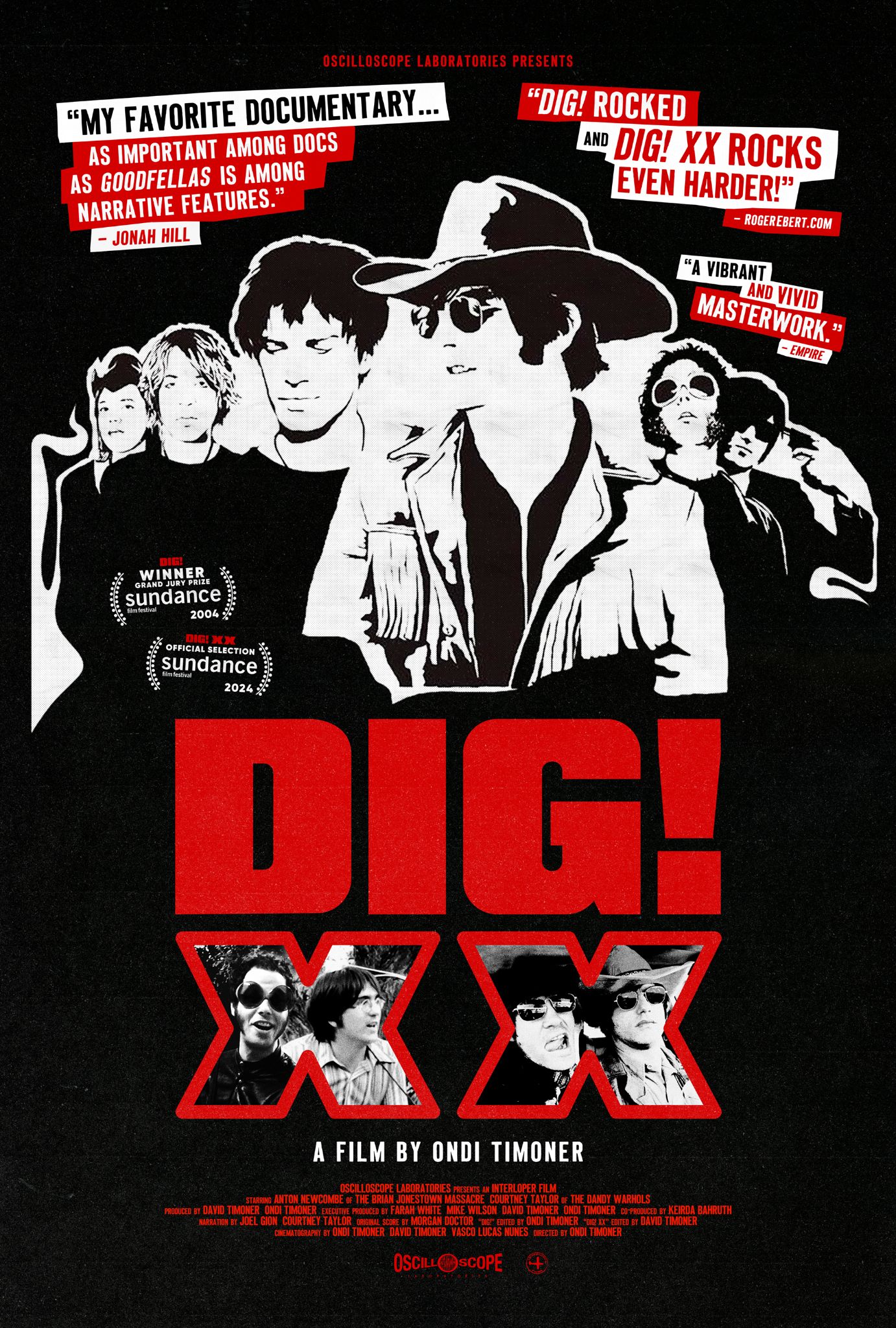"Cool people are the worst!" says the pop star Björk, winking conspiratorially at 16-year-old Johanna Morrigan (Beanie Feldstein). Sure, she's a figment of Johanna’s imagination, speaking from a Debut-era tour poster hanging in a public restroom, but her middle finger to the mainstream sentiment remains earnest in Coky Giedroyc's How To Build A Girl, out this Friday on VOD. Co-written by and based on British columnist Caitlin Moran's bestselling 2014 novel of the same name, it is also based, at least partly, on her life. Both Moran and Johanna grew up working class, on a council estate in Wolverhampton surrounded by several dogs and siblings; both were hired as rock critics by male-dominated music magazines at the tender age of 16 (Moran for British weekly Melody Maker, Johanna the Disc & Music Echo).
A friendless swot who voluntarily writes 33-page essays to impress her English teacher, Johanna has long shunned the idea of "cool." Indeed, it is her passionate critical analysis of the soundtrack to Broadway musical Annie that lands her the DME job interview in the first place. So, when she tires of life as a wallflower and dyes her hair cherry-red, reinventing herself as the steampunk-styled music journalist and "lady sex pirate" Dolly Wilde, it's both to her surprise and delight that other people begin to drink the proverbial Kool-Aid. A sip of sex, a lick of power, and Johanna is high on her own supply, too.
The film is a bouncy, high-gloss coming of age tale that presents Johanna's giddy, girlish enthusiasm as both her ticket out of suburbia and her undoing in a world that pressures her to behave more like an adult. As per the tropes of the genre, there is drinking, self-harm, a "teenage delinquency phase." There is a makeover montage. There is even a sexual awakening of sorts, though all scenes of raunchiness are played for laughs. "I do not think my adventure starts with a boy -- I think it starts with me," her voiceover says brightly near the beginning of the film. As a statement of intent, it’s literal.
Like the recent teen movies Lady Bird and Booksmart (both of which star Feldstein), whose audiences the film hopes to appeal to, romance is relegated to subplot. Unlike in those movies, the protagonist has no friends. Instead, the inspirational figures pinned to her bedroom wall -- like Sigmund Freud (Michael Sheen), Elizabeth Taylor (Lily Allen), and The Sound Of Music’s Maria Von Trapp (Gemma Arterton) -- are her companions. In a cutesy magic realist touch, they come to life, offering imagined words of consolation and comfort. (The Björk character, officially known as "Snow Pixie," is portrayed by Patsy Ferran.) Johanna's girl-against-the-world attitude implies a self-empowered "feminist" narrative -- one with solidarity and sisterhood low on co-writers Moran and John Niven’s list of priorities.
Casting an American starlet to play a girl from the Black Country suggests that authenticity isn't important. Feldstein has been chosen for her crossover appeal, and it's true she is appealing -- earnest and likable, with big, beatific eyes and a misty expression that suggests a girl lost in her own world. Feldstein does her best to channel the lilting, pitched-down musicality of a Wolverhampton accent but can't quite match costars Sarah Solemani and Paddy Considine, who play her depressed mother and failed jazz-musician father respectively. For every regional term of endearment -- every well-judged "bab" and "cocker" -- there's a sense that the pantomimed Englishness has been dialed up for an international audience. Sometimes, this works. "You look like a fat Bros," Johanna smirks at her father, Pat, referencing '80s teen heartthrobs Matt and Luke Goss (and seemingly unaware that she is squeezed into a too-small leather bomber herself). Pat's solo band is called Mayonnaise. Moran's caustic sense of humor translates well as withering one-liners. When their TV is repossessed, Johanna admits that it’s tough, "like when Beth dies in Little Women."
The film is set in the early 1990s. Recent years have seen a celebration of '90s culture in music and fashion (consider the return of slip dresses, sportswear, beanie hats, bum bags), but there has been little reflection on the shortsightedness of the decade's politics. In the UK at least, the '90s are still remembered as an era of hedonism. The economy was growing again, the optimism of Tony Blair's New Labour government marked the end of almost 20 years of Tory reign, the millennium was fast approaching. We had Britpop, Ecstasy, rave culture, lads' mags. It’s taken 20 years of hindsight to understand the political, economic, and environmental havoc this excess and myopia would come to wreak.
If the '70s welcomed consciousness-raising meetings and second-wave feminism, the '80s saw Britain's first female Prime Minister Margaret Thatcher pulling the ladder up behind her and laying a thick glass ceiling, a figurehead for individual women who pulled themselves up by their own bootstraps. In the '90s, when Moran came of age, the riot grrrl movement was up against the permissive hypersexualisation of mainstream "postfeminism." Johanna isn't glueing and sticking zines or listening to Bikini Kill with her girlfriends; she’s experiencing a transcendent moment with a lager in hand at a Manic Street Preachers gig (admittedly a group who rejected the era's machismo). It's telling that she gravitates towards male-dominated spaces.
Too often, the teenage Johanna ends up in the hotel rooms of older men. The film depicts her growing dependence on booze, suggesting vulnerability underneath her confident, mouthy exterior. In one scene, Johanna's creepy boss invites her to sit on his knee during a meeting. She pauses for a second, weighing up the risk, before bouncing heartily on his lap and laughing in his face. Her lightheartedness of this individual action is rewarded. No harm, no foul.
To be fair to Moran, this is her brand. In her 2011 memoir How To Be A Woman, she proposed a "fifth wave" of feminism that would tackle "the awkwardness, disconnect and bullshit of being a modern woman, not by shouting at it, internalizing it, or squabbling about it -- but by simply pointing at it and going 'Ha!' instead." It's in keeping with Niven's body of work, too. The author’s novel Kill Your Friends and its 2018 sequel Kill ‘Em All both aimed to satirize "toxic masculinity" but failed to do much more than describe it in gory detail. Perhaps it's not surprising then, that How To Build A Girl is uneasy about confronting Johanna's complicity in the misogyny she experiences. And so it is laughed off and glossed over.
Her male colleagues at the DME are treated as pedantic, humorless bores (an archetype many young women will recognize). When her first review is published, the moment is treated as a moment of female triumph, a fuck you to the men who underestimated her abilities. Except, this feels odd given Johanna's lack of knowledge about and interest in the music she’s writing about, playing into the sexist stereotype that female critics are less informed about music and art than their male peers. In this sense, her eventual success as a columnist feels neither hard-won nor subversive. After receiving hate-mail from readers, she decides to sharpen her claws. Her hatchet jobs are a hit. "A nice girl gets nowhere, but a bitch… A bitch can make a comeback," her voiceover states. "Rainbows and kittens don't pay the rent!" she insists. Johanna is rewarded with a pay rise and a regular column, a bad-faith capitalist triumph. She wins an award for "Arsehole of the Year." Apparently, people will criticize a woman regardless of what she does, or says, or writes.
[videoembed size="full_width" alignment="center"][/videoembed]
How To Build A Girl is out 5/8 on VOD.






